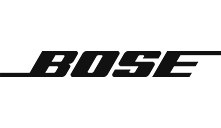Back to article
3348
Connecting to a mixer
A mixer can be connected to your Bose speakers. This offers the added connectivity and/or audio processing options available on the mixer.
To connect a mixing board to the Bose system:
Getting connected
- Connect each source (i.e. instruments and microphones) to the desired channels on the mixer
- Connect the Main Output of the mixing board to the Bose system:
- If the mixer has 1/4" output, connect to Input 1 or 2 on the Bose system
- If the mixer has XLR output, connect to Input 1 or 2 on the Bose system
- If the mixer has 3.5mm, RCA or other output, use an appropriate cable or adapter to connect to to one of the Bose inputs
- If connecting the mixer to Input 1 or 2 on the Bose system:
- Set the Bose input's ToneMatch switch to "Off"
- Set the Bose input's Reverb knob all the way down to avoid applying reverb to the entire mix
- Set the Bose input's Bass and Treble knobs to half / neutral. Then, if needed, adjust the knobs to achieve the desired sound
Note: The XLR and 1/4" inputs on the Bose system are mono. If the mixer does not have a mono output, pan each mixer channel all the way to the Left and connect the mixer's Left output to the Bose system.
Adjusting volume and trim levels
- Lower the volume of your system to avoid volume spikes or feedback while making adjustments
- For each mixer channel, play the connected audio source (i.e. instrument or microphone) as loud as you will while performing
- While the source is playing, set the input trim on each mixer channel so it is as high as it can be without the mixer clip indicator illuminating
- Set the master volume on the mixer to 0 dB / unity gain
Tip: On Bose ToneMatch mixers, this is 10 o' clock - Adjust the Bose system volume to the desired level
- Adjust each mixer channel volume control to the desired level.
Tip: Be sure the channel and master volume levels are not clipping to avoid distorted sound.
Was this article helpful?
Thank you for your feedback!

